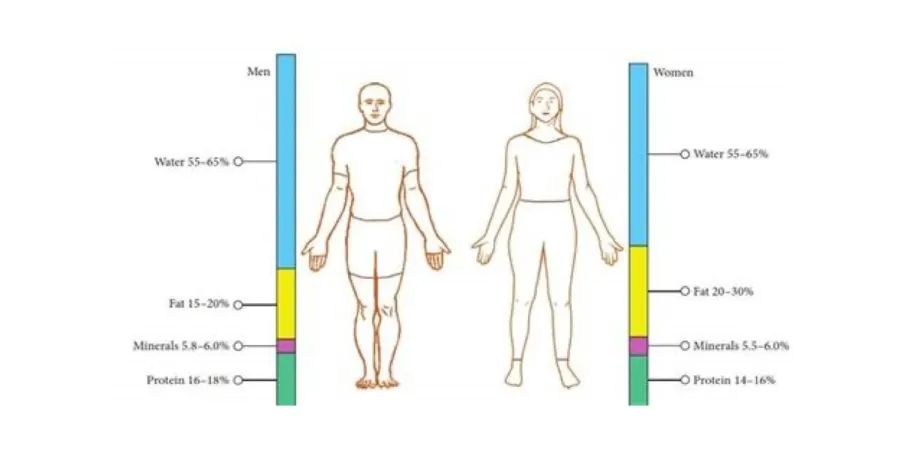Women are NOT smaller men

Women's Personal Protective Equipment (PPE)
Personal protective equipment (PPE) is the last line of defense for protecting workers on the job. Hazards should be eliminated or mitigated by using better design or engineering controls, or by administrative controls (safer job procedures) before PPE is assigned.
But in many industries, PPE is used either as extra protection or in some cases, the only protection that can keep a worker from getting injured or sick.
Why, then, are women so often left out? In order to be effective, PPE must fit properly.
According to OSHA, “All personal protective equipment should be safely designed and constructed, and should be maintained in a clean and reliable fashion. It should fit comfortably, encouraging worker use. If the personal protective equipment does not fit properly, it can make the difference between being safely covered or dangerously exposed.”
Too often workplaces supply women PPE that is just a small size of men’s clothing. That is not adequate.
Men and women are built differently. Some of those differences are:
- Women have narrower shoulders than men.
- Women’s chests need roomier garments than men’s garments.
- Women have shorter torsos than men.
- Women have wider hips than men.
- Women’s hands are smaller; fingers are narrower and finger lengths are different proportions than men’s fingers.
Working in the wrong size clothing can make work more hazardous! Using the wrong size glove can affect the ability to properly grip. Extra fabric from clothing that is too big can create trip and fall hazards or can get caught in machinery. Improperly-sized headgear can fall off. The wrong size hearing protection can simply be ineffective.
It is also broadly reported that when PPE is not comfortable, workers are less likely to use it consistently.
The problem is widespread. Eighty-four percent (84%) of women report having difficulty finding the right size of PPE. Women are being left without proper protection. This problem is easily solved if the right sized PPE is made available.
What can be done?
When employers deny women proper protection by supplying ill-fitting PPE, there are several actions workers and their unions can take.
- Request that the employer contact their safety supplier to find out what women’s PPE is available.
Unfortunately, sometimes the problem is unaddressed because no one has made the request to provide women’s sizes. If the supplier the company uses does not have adequate sizes, including for women, the employer must seek other suppliers who can provide what is needed. - If the request does not produce results, use the union to bring the issue forward.
Different local unions may have different ways to address safety problems: safety and health committees, full-time union safety representatives, grievance procedure. Find out the union’s structure for dealing with safety issues and bring the issue forward the way any other safety issue would be addressed. - If no relief is found through internal processes, file an OSHA complaint.
According to OSHA, “Women should not be put at risk simply because employers are not complying with OSHA’s requirements and providing PPE that ‘properly fits [your] workers.’” While it is every worker’s right to file an OSHA complaint, often there is better resolution if workers get the union involved in OSHA complaints.
Finally, work together to make sure everyone in the workplace has the protection they need. The local union can do a survey or inspection to find out how widespread the problem of ill-fitting PPE is. It may not just be women who have this problem. Others who do not wear standard-sized clothing may also have the same challenges.
Everyone has the right to a workplace free from recognized hazards. Supplying the wrong size PPE is a recognized hazard and should not be tolerated. All workers deserve better.
***
Sources
- Basic information on PPE. United States Department of Labor, Occupational Safety and Health Administration. Retrieved April 2, 2024, from https://www.osha.gov/personal-protective-equipment.
- Riyadi, Munawar & Nugraha, A & Santoso, M & Septaditya, D & Prakoso, Teguh. (2016). Development of Bio-impedance Analyzer (BIA) for Body Fat Calculation. Proceeding of the Electrical Engineering Computer Science and Informatics. 3. 10.11591/eecsi.v3i1.1154.
- Grainger Editorial Staff. (2023, August 25). Gender-specific PPE: Finding PPE fit for Women. Grainger KnowHow. https://www.grainger.com/know-how/safety-health/ppe/kh-finding-ppe-fit-for-women
- Information on PPE. United States Department of Labor, Occupational Safety and Health Administration. Retrieved April 2, 2024, from: https://www.osha.gov/sites/default/files/publications/ppe-factsheet.pdf
- 29 CFR 1910.132(c)
- 29 CFR 1910.132(d)(1)(i)
- 29 CFR 1910.132(d)(1)(iii)